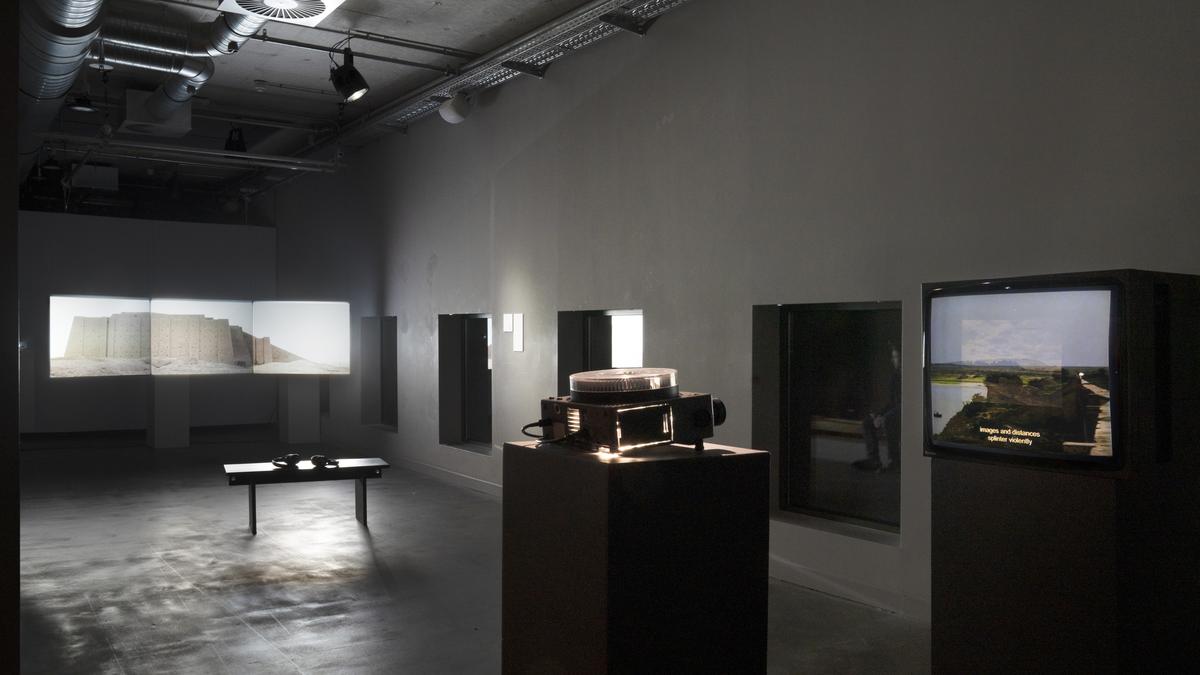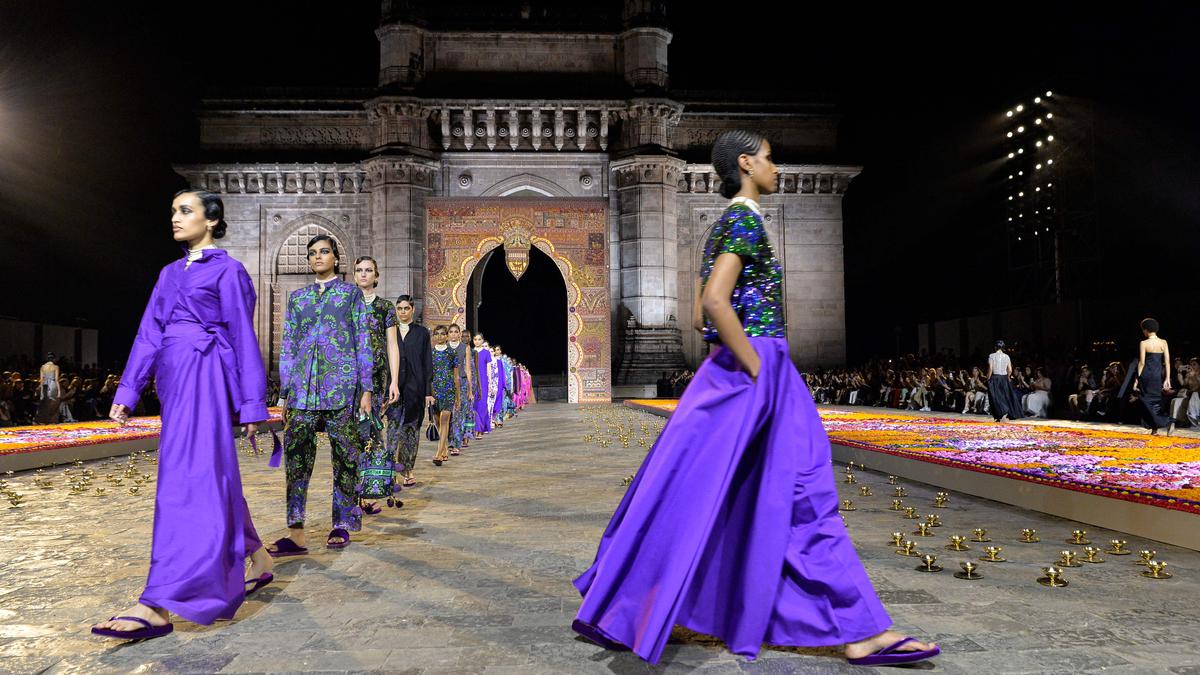Beneath the Placid Lake at the Berlinale
| Photo Credit: Leo Hugendubel
When artist Kush Badhwar was living in Hyderabad in the early 2010s, his building’s caretaker suggested he might be interested in looking at the personal archive of a neighbour who had passed away. Turned out, it belonged to Radha Krishna Sarma, a professor of ancient Indian history at Osmania University. His family was disposing the remains of his academic work stored in the house. This serendipitous event occurred at a time when Badhwar was thinking of various archival material in the context of his research on the Telangana statehood movement on an India Foundation for the Arts (IFA) archival fellowship.
In the collection were VHS tapes, notes, books, and about 1,500 35-mm photograph slides. As he began to study them, he discovered the documentary rushes of the Srisailam dam region and several photographs of the famous salvage archaeology project. From the late 1970s to the late 80s, the Archaeological Survey of India (ASI) had taken up the transplantation and reconsecration of more than 100 ancient temples in Telangana that were under threat of submergence.
Further research led him to the work of New York-based anthropologist Vyjayanthi Rao, whose research focused on the after-effects of the dam construction — on the social, cultural and economic lives of the villagers who were displaced as their homes and lands were submerged. The collaboration that ensued between Badhwar and Rao from 2021 has resulted in an artistic project that was first featured at the Chicago Architecture Biennale in 2023 as Monumental Returns, and recently as Beneath the Placid Lake in the prestigious Forum Expanded section of the 75th Berlinale. Now, the duo has been invited to present at the World Around Summit at The Museum of Modern Art (MOMA) in New York City on April 27.
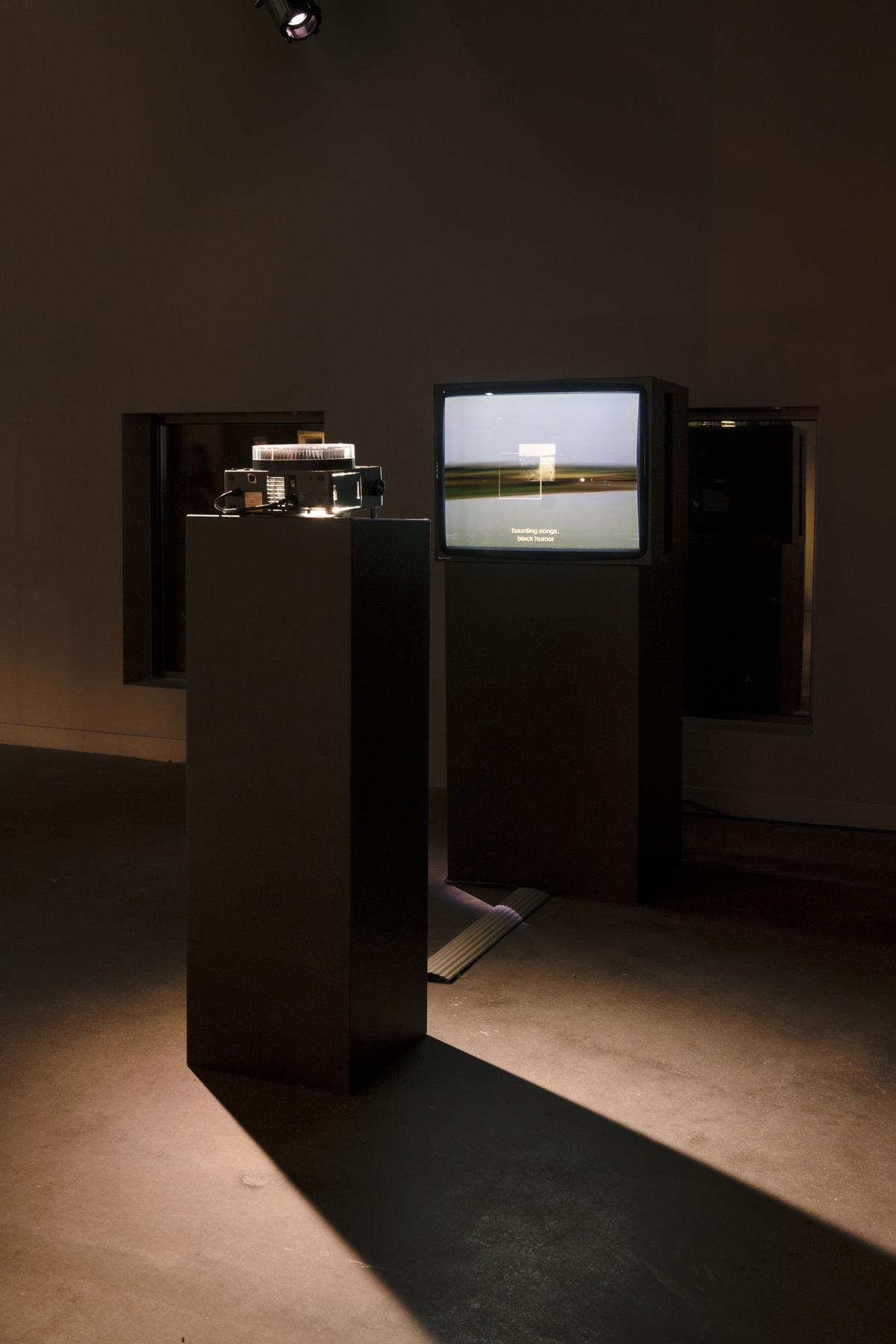
Beneath the Placid Lake
| Photo Credit:
Leo Hugendubel
Forced evictions and a visual installation
The last of the massive modernisation projects of the Nehruvian era, Srisailam dam was sanctioned in 1960 and it took two decades for the construction to be completed. The state’s promise of development and progress demanded the sacrifice of the villagers’ lands and livelihoods, even as resources were dedicated to salvaging old temples — considered of prime importance to narratives of nationalist history. Eventually, more than 100 villages were submerged and 1,50,000 people displaced. But this tragic story has not made a mark in the nation’s cultural memory. In this context, Badhwar and Rao’s project is a welcome intervention that initiates a new conversation, and provokes us to re-evaluate the existing discourses of state-led development.
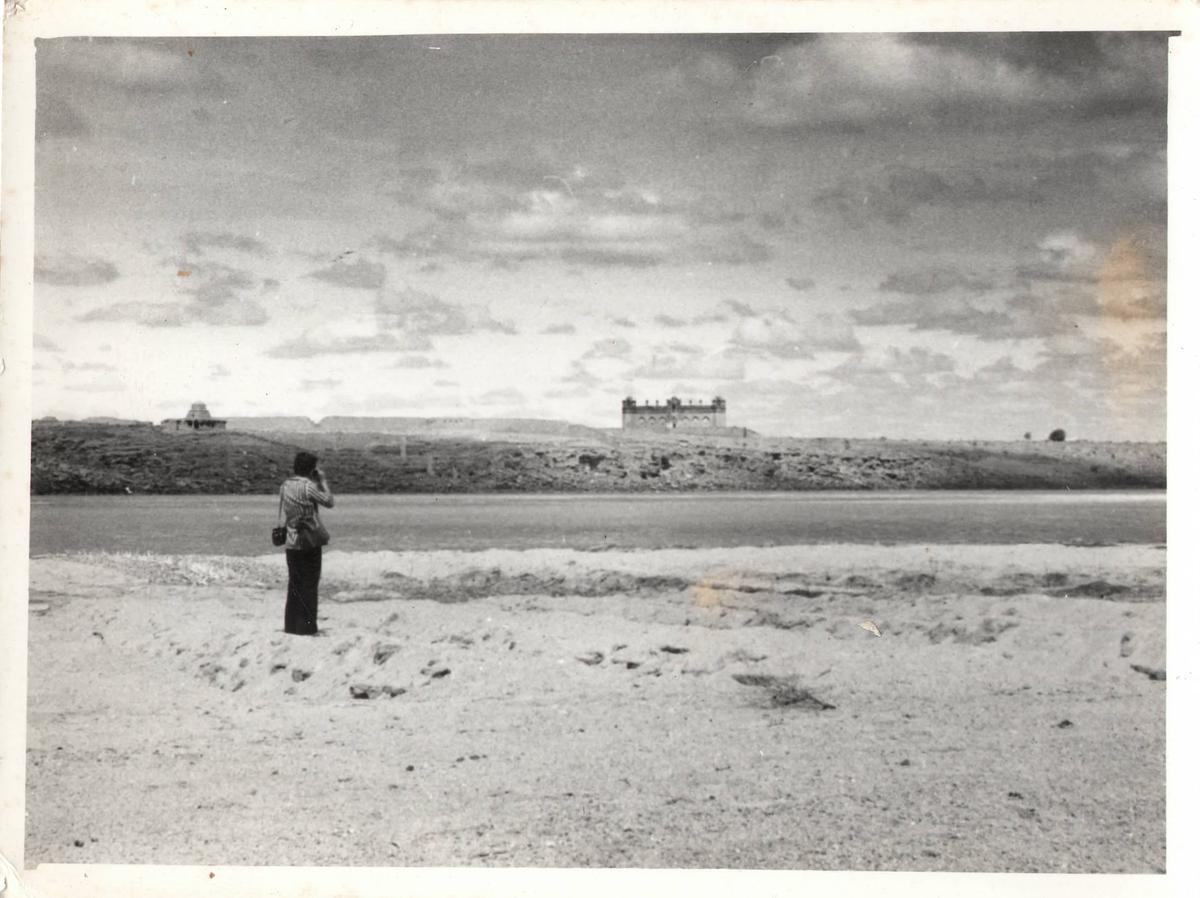
A photo from the installation
I saw Beneath the Placid Lake at the Berlinale. The projection-based installation included a television monitor on which the documentary rushes were played along with curated text, and the images from the slides were projected onto the same screen. While the rushes are from Sarma’s archives, the images are a mix of the late professor’s documentation of the temples prior to the dam project and during the salvage archaeology project, Rao’s field research in the late 1990s, and maps and drawings from the archives of the French Institute of Pondicherry. The text on the screen is Rao’s poetic reinterpretation of her field notes from a trip to a dargah in the submerged parts of Jetprole village with a few local women.
Through the superimposition of three different types of research material, the installation urges the viewer to consider the cultural, social and spatial experiences of displacement. Although it does not attempt to linearly narrate the story of the displacement and the transplantation of more than 100 temples, the formal act of superimposition of research material of three generations of researchers from different disciplines narrates a story of varied knowledge practices in the same context. As an academic with a deep interest in temple architecture, Sarma’s images focus on the ancient structures and the archaeological project; Rao’s text — as a researcher and anthropologist — reflects on the villagers’ loss of social and material contexts and the suspended nature of their lives, straddling the remains of the submerged parts and a new village.
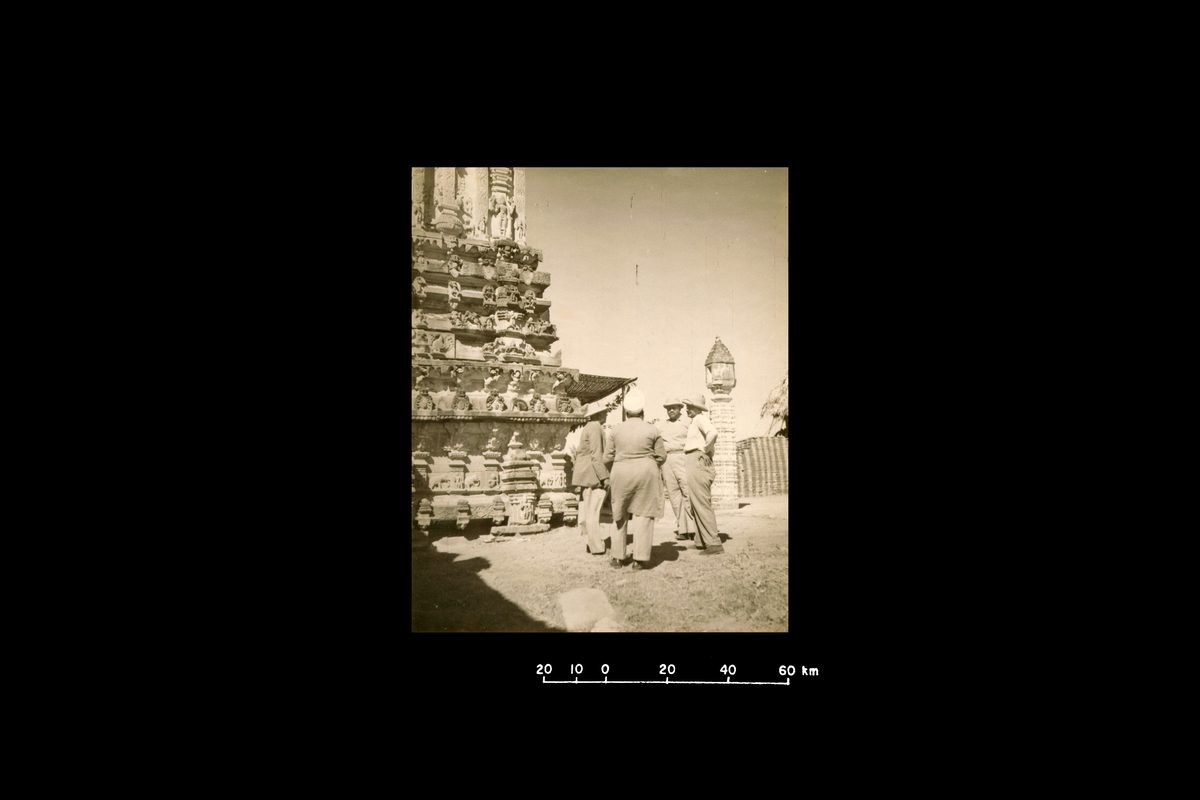
A slide from the installation
Three generations of research
While the viewer can experience and engage with the formal features of the visual installation, the multi-layered thematic concerns are not immediately apparent — unless one is already aware of the context of the Srisailam dam project. When I ask the duo about this, Rao shares that their quest has been to find new and different ways of approaching such stories of displacement that don’t have to be explanatory, but rather focus on the experience; she feels that the art project provides an opportunity to go beyond the representations allowed by academic writing or activism, which have been done ad nauseam in the Srisailam context. Badhwar adds, “We exist in relation to a network of texts and hence, are also limited by the material we have collected.”

A slide from Beneath the Placid Lake
He explains that the journey of the project has been iterative, almost rehearsal-like, from the beginning: it was first presented as a lecture performance on Sarma’s archives at the 2019 Flaherty Festival in Canada before transforming into an installation with a focus on displacement.
How are they approaching the MOMA event, which sounds more like a symposium than an exhibition? While Rao reveals that they are planning a lecture performance, Badhwar adds that thematically the plan is to engage with two parallel story lines: about the varied knowledge production methods of three generations of researchers, and the story of the dam and its aftermath.
The summit will be livestreamed on YouTube on April 27. Registration is via the MOMA website.
The Bengaluru-based writer, filmmaker and educator teaches at Srishti Manipal Institute of Art, Design and Technology.
Published – April 23, 2025 05:49 pm IST


